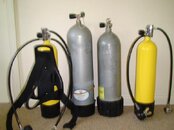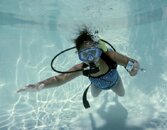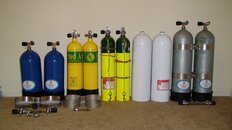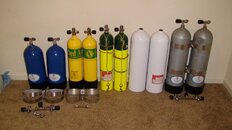- Messages
- 17,327
- Reaction score
- 13,749
- # of dives
- 100 - 199
this Scubapro cylinder is *almost* the "preferred" cylinder I spec-ed. Problem is, it is too heavy, relatively. Because it weighs 26.0# (rather than the 21# that I spec-ed), its buoyancy is -2.3# empty (rather than the neutral empty buoyancy that I spec-ed).
I guess it depends on how much exposure protection you need. For us who dive in cold water, tank weight only matters when you're hauling it into the shop for a fill, lifting it out of the trunk or stowing it in the boat, off the rig. When it's rigged, any weight savings will have to be compensated with more lead, either on the rig or on the belt.
Even when I was using my almost-25-kg beast of a 15x300, I had to have some weight in my weight pockets or on my belt. Why should I pay big for a light tank made from unobtainium when my rig would weigh the same anyway?
--
Sent from my Android phone
Typos are a feature, not a bug







